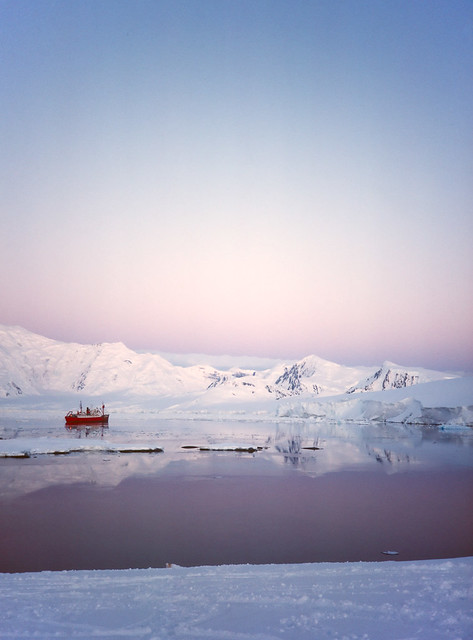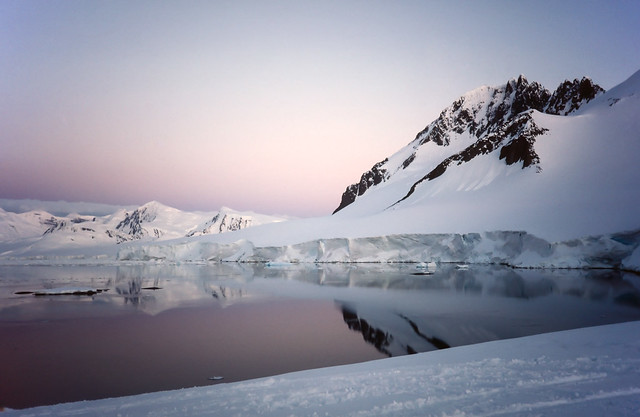It’s timely that I set out my motivations for writing this blog. Quite simply, it’s personal. I have nothing to sell, I’m not harvesting clicks, I’m not looking to grow a big audience or profile. Yes, to some extent I’d like to draw attention to my photography, despite having long ago realised firstly that this is futile, and secondly, being dependent on recognition is not a path to happiness or fulfilment. But I have no illusions or expectations that my opinions on anything amount to much, or provide anything other than very mild entertainment. I like to engage with readers, and try to answer queries and questions as best I can (most of these come via email, as a rule people don’t like commenting or debating in the public arena).
So, why is this timely? Well, I’ve been taken to task in quite a major way by a representative from Lasersoft for my last, rather unappreciative, posting on Silverfast. Since that also was via email, I will not go into details here, apart from to comment on the fact that posting it as a comment would have been far more beneficial to Lasersoft, as it shows that the company both listens and cares, and is hurt by what it sees, probably correctly, as unfair criticism. But it also reinforces that their handling of customer relations via social media needs improvement, and does their image and probably their sales a lot less good than it could.
But I will readdress my criticisms of Silverfast 8.8, and try to correct some inaccuracies. First of all, it is again important that I set out my ground rules here. I am a paying customer of Silverfast. I have no special relationship with the company, indeed no relationship at all beyond being a customer. I have been using Silverfast for around 15 years, on Minolta, Canon and Plustek scanners, as well as the HDR version which reprocesses generic Silverfast scan files. Film photography is still important to me, and I scan standard 35mm, “panoramic” 35mm, and a range of medium format from 6x6 to 6x12. Silverfast is therefore “mission-critical” to what I do. I pay for it - and it isn’t cheap - and I expect it to work as advertised. When it works nominally, I’m very happy. When it does stuff that impresses me, I praise it. When it lets me down - which is not often - I get annoyed. When it lets me down badly, as it did recently, I get angry. And then I turn to Vuescan, and 5 minutes later, decide to give up film photography… (I know that Vuescan works for some people, but it doesn’t for me. Believe me, I’ve tried).
So, my position is that Lasersoft has a duty to me, and to other paying customers, to provide reliable software which performs the functions it is advertised to provide. In return, if I choose to write about Silverfast, I should do so fairly, and with attention to factual accuracy. Possibly neither party here has quite achieved this is the last iteration.
There is very, very little written about Silverfast on the web these days, at least not in English. Actually there’s not a great deal in Germain either. And a large proportion of that little amount is either recycled PR or individuals declaiming that “Silverfast sucks”, that it has “the worst GUI”, that it is “the worst software ever”, bla bla etc etc. None of these people have read the manual of course. Or, rather, they would not have read it if one existed. Which it doesn’t, still, for version 8, and this is a point that Lasersoft badly needs to address seriously. So, since I do write about the software and the process from time to time, reasonably fairly, and quite positively, I suppose it isn’t that surprising I get some traction on the topic, and very occasionally, some reaction from Lasersoft.
So let’s get back to 8.8. My basic problems seem to be associated with side effects of the introduction of SRDx. My rather rude dismissal of SRDx was more to do with the fact that it seemed to be destroying my workflow, rather than any actual evaluation. In fact I still haven’t evaluated it. But eventually I did what probably I should have done to start with, and used the “Reset Software” feature in both AI Studio and HDR Studio. This seemed to clear up some issues - although unfortunately it also appears to delete all of my stored presets - and I was able to complete the 64bit HDRi scans of the batch of 6x7 negatives I was working with. I ran out of time for running them through HDRi, though, although I did process one sample with SRD turned off. I’m not yet sure about the other issues I noticed, in particular the “black screen” where Silverfast seems to get confused about previews. This needs some dedicated time in order to try to replicate and report to user support.
I do retract the derogatory comments I made about the ColorServer feature, which in any case I’m in no position to evaluate. Actually I’m rather reassured that there is still professional customer demand for such a high end pro feature. And of course I made the classic mistake of assuming that since I could not, immediately, see any reason for using SRDx for digital camera file processing, then neither could anyone else. All of that was down to frustration arising from my own specific issues rather than any real complaint.
I think it is worth remembering that Silverfast has some absolutely world-class features. Just a few examples include the one-click scanner calibration, the 4-target neutral grey-balance tool, and the selective and global colour correction, which are at least on a par with recent and much lauded counterparts in CaptureOne v9. These together allow to arrive at an ideally balanced scan in way, way less time than it would take in Photoshop, even if you could work out how to do it there. Some other favourites of mine are the simultaneous, live input/output histograms and the Kodak Portra 400 NegaFix profile, which I find to be remarkably accurate. And in more recent releases, the greatly improved Job Manager, and especially the copy/paste settings feature, has saved me a lot of time.
There are areas that could be improved though, and a certain tendency towards UI bloopers which could be avoided with a little care and attention. Simply as an example, I’m going to come back to the SRDx / iSRD issue.
When newly discovering v8.8, the first thing I’m going to look for is the banner feature, SRDx. But it isn’t there. In fact, for my Plustek OpticFilm 120 scanner, it’s hiding behind the iSRD button. Clicking on that reveals the Dust & Scratches panel, with two tabs - SRDx, and iSRD.

Initially SRDx is on top, which again, is a little weird as I’d clicked on the iSRD button. This then starts to make me wonder - is SRDx actually being promoted as superior to iSRD in all situations, including those for which IR Dust & Scratch removal works ? Is SRDx an alternative, or a complement, i.e can they work together ... or indeed should they? None of this is very clear from the interface. The mechanism that Silverfast uses in general to turn off an effect or tool is a checkbox in the title bar of the tool. It seems in this case that switching tabs activates the visible SRD option and deactivates the other, but to my mind this is weak feedback. Of course, ironically this is nothing new - the precursor to SRDx, plain vanilla SRD, lived in the same spot. But as it didn’t interest me, and was never visible by default, I never noticed.
So my conclusion must be that yes, the tabs are intended also as on/off switches. This goes against generally understood usage of tabs - as for example evident in Silverfish’s preferences popup - so I don’t think it is a good idea.
But in fact my attention was drawn to this simply because after playing around with these features a bit, I realised that the real time preview wasn’t working any more, for any tool, for example gradation. Otherwise I’d probably never have noticed!
Note, when the source file does not have a recognizable IR channel, or, I assume, the scanner does not have an IR channel, you get an SRDx button instead of iSRD…
...which, I guess, makes more sense of it all. But still, my feeling is that there must be a better way to do this for cases where both modes are available.
Final conclusion, I retract my recommendation to not touch 8.8, but as with any new release, I would say be careful, and unlike me, don’t install it when you’ve got some urgent work to do. That much is just common sense, which this time around eluded me.
I still think Silverfast is a great tool, and one that the film scanning community in particular is fortunate to still have around. The last point is on pricing. I mentioned that it costs €999. Well, yes, but that is for the fully loaded Archive Suite I use, and for the Plustek OpticFilm 120. And actually OpticFilm 120 comes with Ai Studio, priced at €658, and includes an IT8 6x7 calibration target. Depending on your scanner, the basic Archive solution comes in at €299 at the moment (hint, if you’ve got HDR Studio, you only need SE Plus as the scanning part, not Ai Studio). So yes, €999 is a bit of an extreme worst case scenario!
And then there are the entry and mid-level options, at much lower cost (under €50), and still featuring the same core scanning engine. Clearly it isn’t cheap. The competition is - at first glance - cheaper. But taking into account the output quality and the time it will save you, it’s hardly an unreasonable investment in an overall film photography budget.
So to start the New Year on a positive note, I apologise to the Silverfast team for my bad tempered rant, and I wish everybody reading this a happy and successful year of scanning. Even Vuescan users 😊







